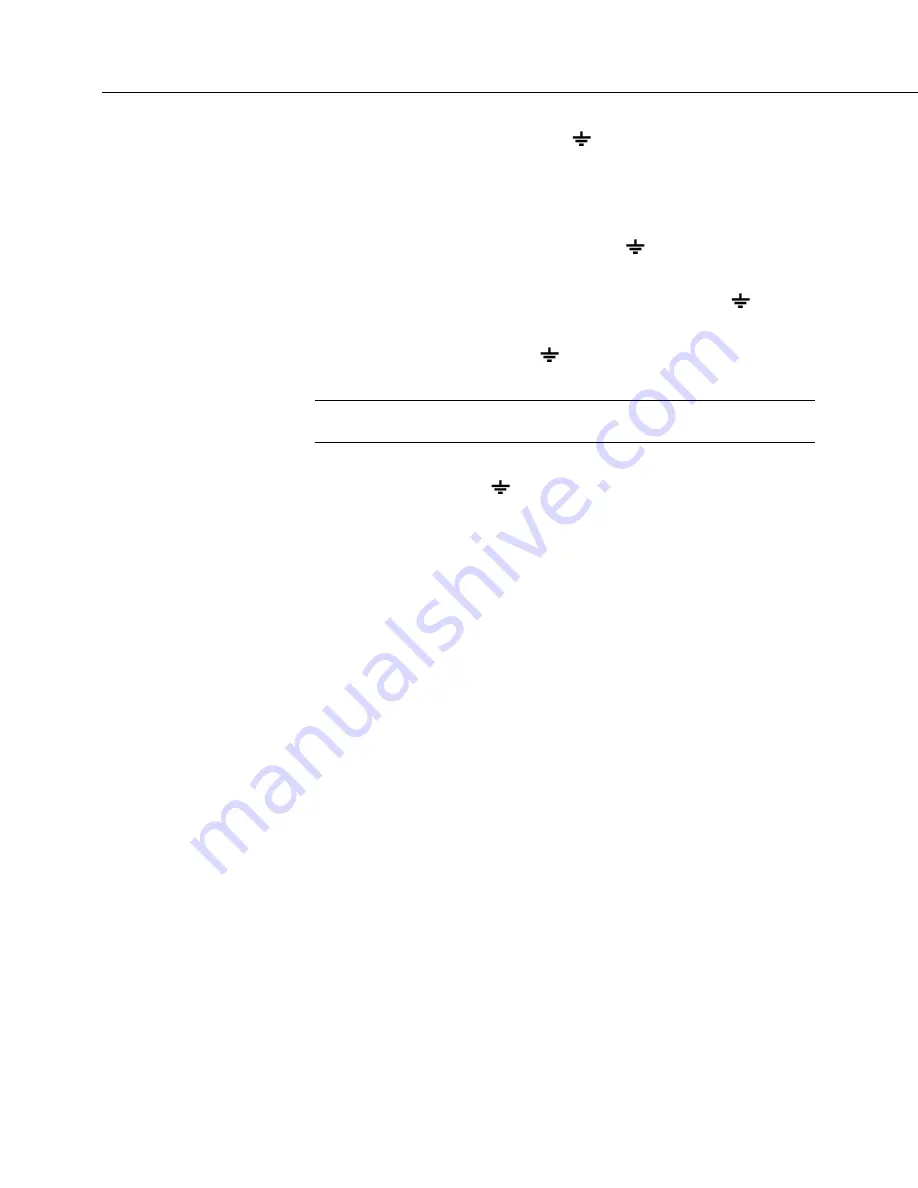
Section 7. Installation
100
fluctuations by separating signal grounds ( ) from power grounds (
G
). To take
advantage of this design, observe the following rules:
•
Connect grounds associated with
12V
,
SW12
,
5V
, and
C1
–
C4
terminals to
G
terminals.
•
Connect excitation grounds to the nearest
terminal on the same
terminal block.
•
Connect the low side of single-ended sensors to the nearest
terminal
on the same terminal block.
•
Connect shield wires to the
terminal nearest the terminals to which
the sensor signal wires are connected.
Note
Several ground wires can be connected to the same ground
terminal.
If offset problems occur because of shield or ground leads with large current flow,
tying the problem leads into
terminals next to terminals configured for
excitation and pulse-count should help. Problem leads can also be tied directly to
the ground lug to minimize induced single-ended offset voltages.
7.3.3 Ground Potential Differences
Because a single-ended measurement is referenced to CR800 ground, any
difference in ground potential between the sensor and the CR800 will result in a
measurement error. Differential measurements MUST be used when the input
ground is known to be at a different ground potential from CR800 ground. See
the section
Single-Ended Measurements — Details
(p. 350)
for more information.
Ground potential differences are a common problem when measuring full-bridge
sensors (strain gages, pressure transducers, etc), and when measuring
thermocouples in soil.
7.3.3.1 Soil Temperature Thermocouple
If the measuring junction of a thermocouple is not insulated when in soil or water,
and the potential of earth ground is, for example, 1 mV greater at the sensor than
at the point where the CR800 is grounded, the measured voltage is 1 mV greater
than the thermocouple output. With a copper-constantan thermocouple, 1 mV
equates to approximately 25 °C measurement error.
7.3.3.2 External Signal Conditioner
External instruments with integrated signal conditioners, such as an infrared gas
analyzer (IRGA), are frequently used to make measurements and send analog
information to the CR800. These instruments are often powered by the same
Vac-line source as the CR800. Despite being tied to the same ground,
differences in current drain and lead resistance result in different ground
Summary of Contents for CR800 Series
Page 2: ......
Page 4: ......
Page 6: ......
Page 32: ......
Page 34: ......
Page 54: ......
Page 92: ......
Page 310: ......
Page 446: ...Section 8 Operation 446 8 11 2 Data Display FIGURE 100 CR1000KD Displaying Data ...
Page 448: ...Section 8 Operation 448 FIGURE 102 CR1000KD Real Time Custom ...
Page 449: ...Section 8 Operation 449 8 11 2 3 Final Storage Data FIGURE 103 CR1000KD Final Storage Data ...
Page 450: ...Section 8 Operation 450 8 11 3 Run Stop Program FIGURE 104 CR1000KD Run Stop Program ...
Page 452: ...Section 8 Operation 452 FIGURE 106 CR1000KD File Edit ...
Page 456: ......
Page 462: ......
Page 523: ...Section 11 Glossary 523 FIGURE 116 Relationships of Accuracy Precision and Resolution ...
Page 524: ......
Page 526: ......
Page 556: ......
Page 558: ......
Page 560: ......
Page 597: ......












































